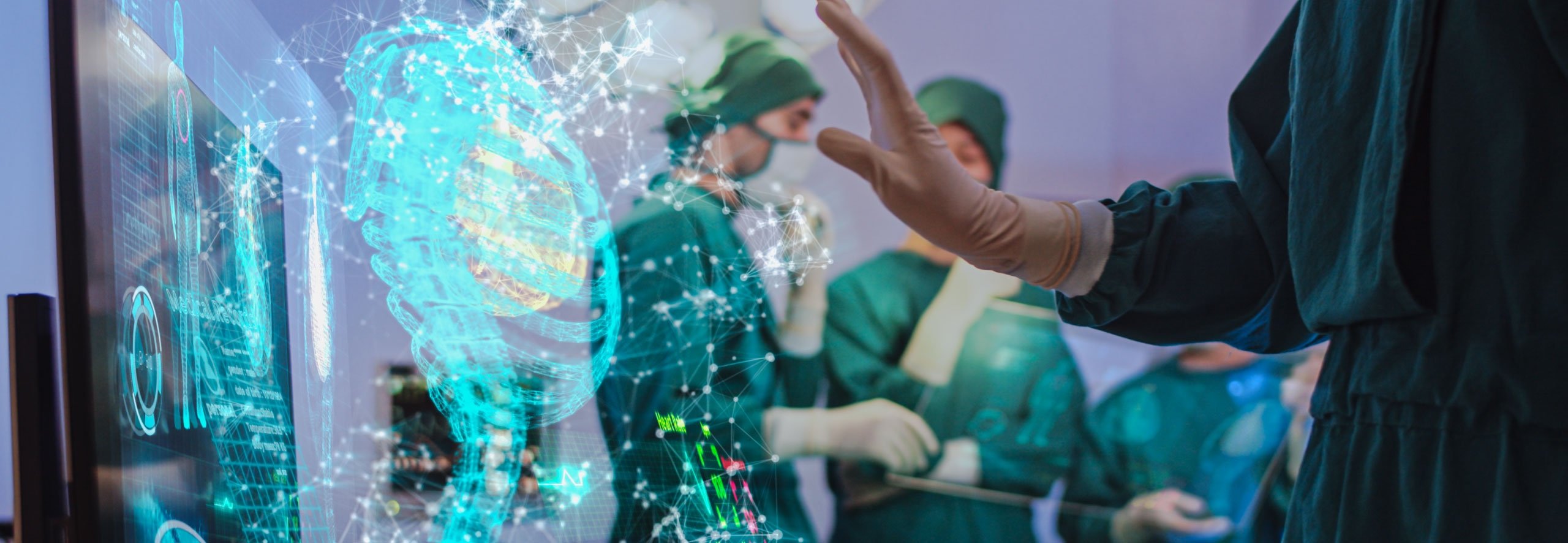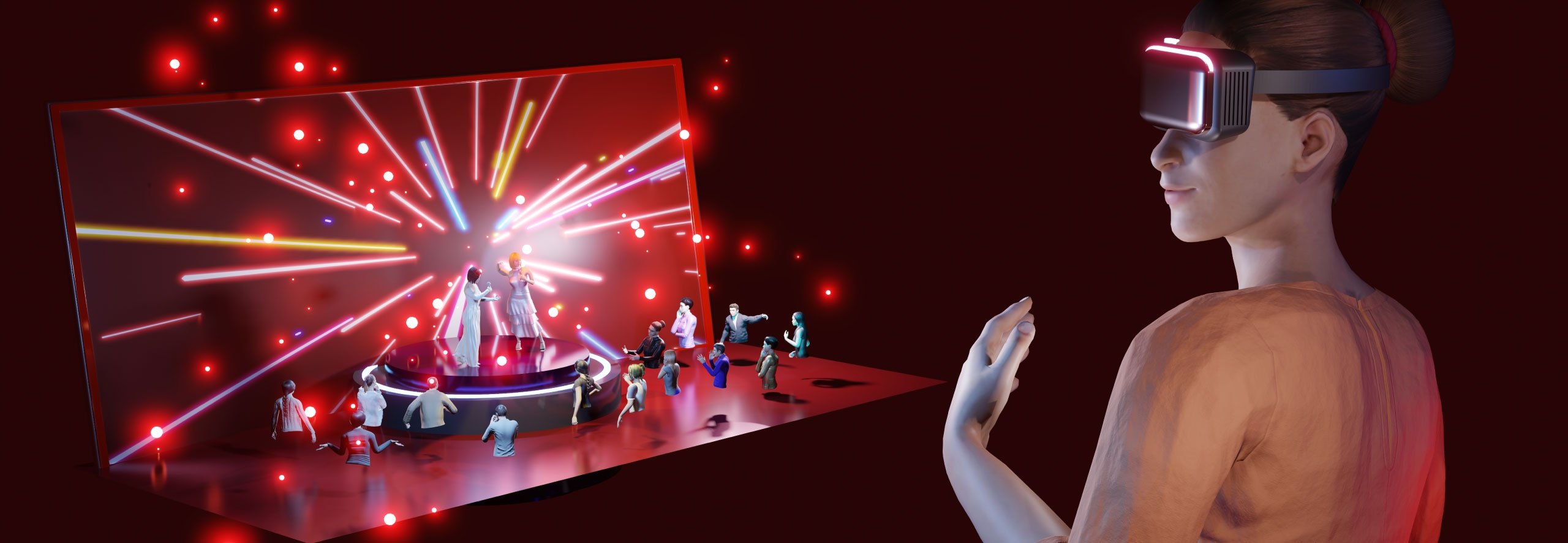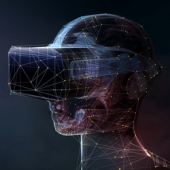Innovation economist talks AI, A-commerce, haptics, humanity and mind-bending metaverse jobs
IN BRIEF
- Imagine teaching someone to repair an airplane engine on Zoom? It would be borderline impossible. However, the metaverse allows replicas, or digital twins, to be built. In fact, scale doesn’t really exist, so why not take a class of mechanical engineers inside a giant jet engine?
- One of the jobs of the future I envision is Head of the Immersive Workplace, a person or team that will make sure that the virtual version of the workplace is performing as it should be.
- Haptics, the ability to feel and perceive touch through the internet, will also make the metaverse blow our minds. It will change how we do holidays, how we relax, how we visit people, even how we attend weddings and funerals.
Shivvy Jervis is an innovation expert, futurist, broadcaster and keynote speaker who advises businesses and consumers on how new developments and advances in digital, science and psychology impact the innovation economy. Jervis, named Champion of Change by Management Today and one of Britain’s Women of the Year, has keynoted more than 600 conferences. A former CNN Asia and Reuters reporter, Jervis sits down with Joe Kornik, Editor-in-Chief of VISION by Protiviti, to shine a light on what’s next. She referenced some of these stats during our discussion.
Kornik: You are a renowned futurist and innovation economist, so let’s talk about the future of the metaverse. Specifically, how big of an impact do you think it will have on our daily lives, and when?
Jervis: I see a version of the metaverse—immersive reality—as having a reasonable impact on our lives as consumers and working professionals. By “immersive” I mean the more accessible version, such as augmented reality—the ability to overlay digital material like a product, place, image or video over the real world, especially given that the mainstream public is now much more familiar with AR because of social media. The filters on Zoom or TikTok, for instance, are all AR. The specific impact will vary by person, but for most of us it will be an option to experience information in a totally new way. That’s key: The metaverse is not a forced replacement of the real world but it will unlock doors if you want to go through them. The best current example is shopping. You can still go to a brick-and-mortar store, but you can also use the metaverse to browse a virtual shop, try items on digitally and pay digitally. This will expand to other areas: Virtual doctor’s visits for common ailments, or metaverse holidays when time or budgets don’t allow you to go in person. You asked about timing… it depends on the speed of uptake. For retail and leisure, we’ll see it sooner rather than later. For other sectors, such as healthcare or in the workplace, it may take longer. But data shows there are expected to be about 1.7 billion mobile AR users by the end of 2024, and the European AR/VR market is expected to be about US $21 billion by the end of 2025, so it’s reasonable to expect the change to be taking off within a few years.
data shows there are expected to be about 1.7 billion mobile AR users by the end of 2024, and the European AR/VR market is expected to be about US $21 billion by the end of 2025, so it’s reasonable to expect the change to be taking off within a few years.
Kornik: What is the biggest internal application for businesses leveraging the metaverse?
Jervis: I think it’s training and development. Why hassle an employee by sending them across the country for training when they can take a virtual tour of a site? Organizations that use the metaverse to make the lives of their employees easier will find a huge boost to not only retention but recruitment, too. One of the first noticeable differences will be the bang-for-buck. That is, how much training you can accomplish on a budget. The metaverse means you can hire specialists to teach in-person skills such as mechanical engineering or medicine without the considerable expense of travel and accommodation. We will also be able to use the metaverse to train in a new way: Imagine teaching someone to repair an airplane engine on Zoom or Teams? It would be borderline impossible. However, the metaverse allows replicas, or digital twins, to be built. In fact, scale doesn’t exist, so why not take a class of mechanical engineers inside a giant jet engine? There are huge possibilities in terms of customization. It also allows for failure: The metaverse is a consequence-free environment for engineers, firefighters and surgeons. During training you can let people make terrible—even fatal—errors and learn from them.
Kornik: You mentioned customization. I think that’s one of the potential game changers of the metaverse. Do you agree?
Jervis: I think customization won’t only be commonplace, but essential. People have become used to being able to customise everything in their life, and that won’t change in the metaverse. Companies will live and die by their ability to provide customized service and products. The public is firmly in the driver’s seat here. Keeping a finger on the public’s pulse will matter more than ever in a world where change is relatively easy, but finding the right direction is considerably more difficult. There’s no predicting what will capture people’s attention—who would ever think a digital Gucci bag would sell for US $4,100, even outpacing its real-world price? Lil Nas X’s show on virtual game Roblox saw 33 million people at the concert, and 10.7 million people have attended concerts on Fortnite, a video game. Speaking of gaming, you’d be surprised how often games are the heralds of virtual change a decade or more in advance of the rest of the world. They are always worth watching. Many innovations such as cryptocurrencies, virtual economies, digital twins, AI and more existed in gaming before anywhere else. Some games, such as DOTA 2, allow users to charge each other real money for items and designs to customise their avatars. Companies like Bethesda Softworks take it even further, buying community-made “mods” and releasing them as official content—giving original designers significant royalties.
There’s no predicting what will capture people’s attention—who would ever think a digital Gucci bag would sell for US $4,100, even outpacing its real-world price?
Kornik: There is a whole metaverse economy we should probably talk about. You call it A-Commerce and say it could replace E-commerce in the metaverse. What do you mean by that?
Jervis: A-commerce is short for “automated commerce” or “augmented commerce” and allows products to be visualised in the virtual world to an almost real level. It brings the physical world into the virtual world, harnessing the strengths of both and the weaknesses of neither. It also includes greater integration into our online lives. That new book or product you ordered can be delivered to your home, but what if the software accesses your calendar, knows exactly when it will be delivered and sends it where you are at a given time instead? That’s coming. It’s about commerce customization and convenience, adapting it specifically to you.
Kornik: You talk a lot about jobs of the future, and a few—Head of the Immersive Workplace and Virtual Memory Reconstructor—have applications in the metaverse. Can you explain those roles and why they’ll be important?
Jervis: Of course! One of the jobs of the future I envision is Head of the Immersive Workplace, a person or team that makes sure the virtual version of the workplace is performing as it should. I don’t just mean the staff, I mean ensuring that it matches well with the real world, that it’s functioning properly, that it’s up to date. It’s also difficult managing a virtual team, and there are people management skills that need updating for the virtual world. How do you motivate people virtually? How do you resolve disagreements, disputes or conflicts virtually? Organizational procedures or rules will impact the metaverse differently than they do the real world, and this is something I think this role will handle; it can give insight into how such things will impact the metaverse or other virtual worlds and help integrate new standards or procedures once they’re agreed upon.
I admit that Virtual Memory Reconstructors may sound a bit dystopian. The term refers to a person or team, maybe even a business, whose mission is trying to preserve memories in the best way possible—and while I have some ethical concerns here, first let me explore the context for this. As we move deeper into an AI world, many modern chatbots can take on different personalities, and some of these can be based on real people or even professions, such as teacher or friend. Chatsonic, which is similar to ChatGPT, does this. Each persona comes with a different “personality” and tone of voice depending on the context. Now, companies are looking into creating chatbots that train on the real-life chat transcripts or memories a user has had with someone living or passed, and then take on their personality, tone or mannerisms while communicating. Depending on how this is used, this could be quite useful or quite creepy, perhaps even dangerous. So, a Virtual Memory Reconstructor’s role would be preserving memories and allowing for the reliving of the past, but in a way that meets strict ethical guidelines. It’s a potential future role I think we’ll eventually need because of advanced AI, but obviously it depends a lot on what society demands of its tech over the next decade.
That new book or product you ordered can be delivered to your home, but what if the software accesses your calendar, knows exactly when it will be delivered and sends it where you are at a given time instead? That’s coming.
Kornik: So interesting. It sort of begs the question of how do we hold onto our humanity in this future world?
Jervis: Yes, it’s a great question! How do we ensure we don’t fall into the dystopian reality of machines over humans? The most important thing is to develop technology to accentuate and enable our human desires, feelings and interactions. We should not adopt technology for the sake of the technology itself. If we keep our core human needs—interacting with people, loving our families, protecting our livelihoods, staying healthier for longer—at the heart of any digital solutions, that’s when we have a real shot at a sustainable future. We need a human-led digital future. We do this by making technology that solves real human problems and desires, that factors in our needs at the outset versus as an afterthought, as well as making tools that don’t compromise our privacy or safety.
Kornik: We’ve talked about the future a lot but before we wrap up, I want to ask you to go out a decade or more in the metaverse. What’s possible?
Jervis: The level of personalisation will blow our minds more than anything. I think over time user-generated customisation will be a driving force. Want to walk around a store? Why not do it in Japanese-style architecture and store music? Or New-York style? There’s nothing stopping you from going back in time either. Why not have your family get-together in an Anglo-Saxon longhouse with a fire in the hearth and a snowstorm blowing outside? User-created environments will mean you can easily create your own without being an artist. Look what AI can do with images, drawings, paintings even now. A decade in the future you can describe a memory and have it brought to life. That beach you visited as a child. That waterfall you found as a teenager. Create them easily, bring them to life, and enjoy them anew. Haptics, the ability to feel and perceive touch through the internet, will also make the metaverse blow our minds. It will change how we do holidays, how we relax, how we visit people, even how we attend weddings and funerals.
A decade in the future you can describe a memory and have it brought to life. That beach you visited as a child. That waterfall you found as a teenager. Create them easily, bring them to life, and enjoy them anew.







































